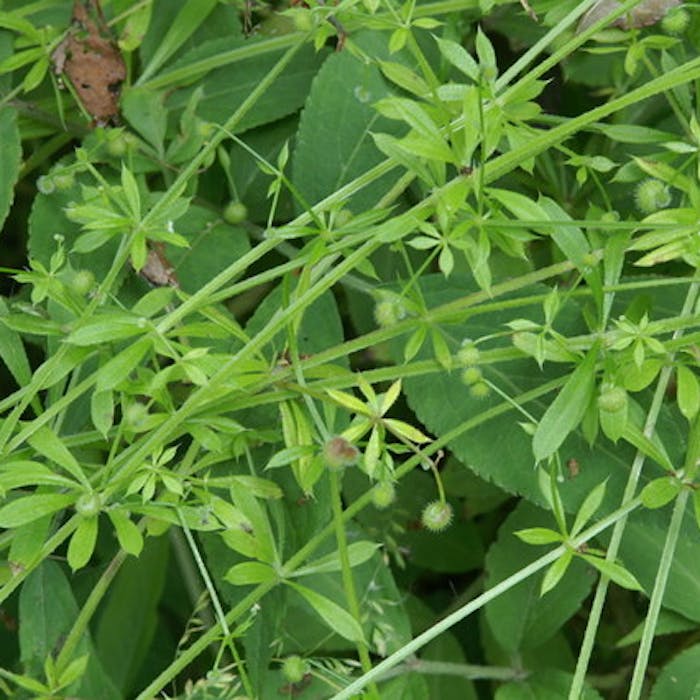
Cleavers - annoyingly successful
Cleavers are those common weeds that have the sticky burrs that end up all over your clothes or your shaggier pets. Also known as goosegrass, 'sticky bobs', 'stick-a-back' and 'kisses'. It is widespread, except for some areas towards the north of Scotland.
Cleavers can be found in a range of habitats including beaches, cultivated land, gardens, hedges, river banks, shingle, waste ground and woodland. It climbs or rambles over other plants and can grow 10 feet in a season. It uses the hooks on its stems to aid its scrambling progress. It has tiny, white, four petaled flowers. The hooks on its fruits attach to animals (and us) to help disperse its seeds. This strategy clearly works extremely well.
The plant is still used as food for chickens and geese (hence the name goosegrass ), and occasionally for humans. The bristles soften completely on cooking. It has also been used for making goosegrass beer in Staffordshire.
The dried foliage of cleavers was once used to stuff mattresses, whereas the roots create a permanent red dye. Other reported uses include to make natural shampoo and deodorants, and in medicine to treat urinary infections, piles, scurvy, ulcers and skin disease.
Further reading
Links to external websites are not maintained by Bite Sized Britain. They are provided to give users access to additional information. Bite Sized Britain is not responsible for the content of these external websites.
